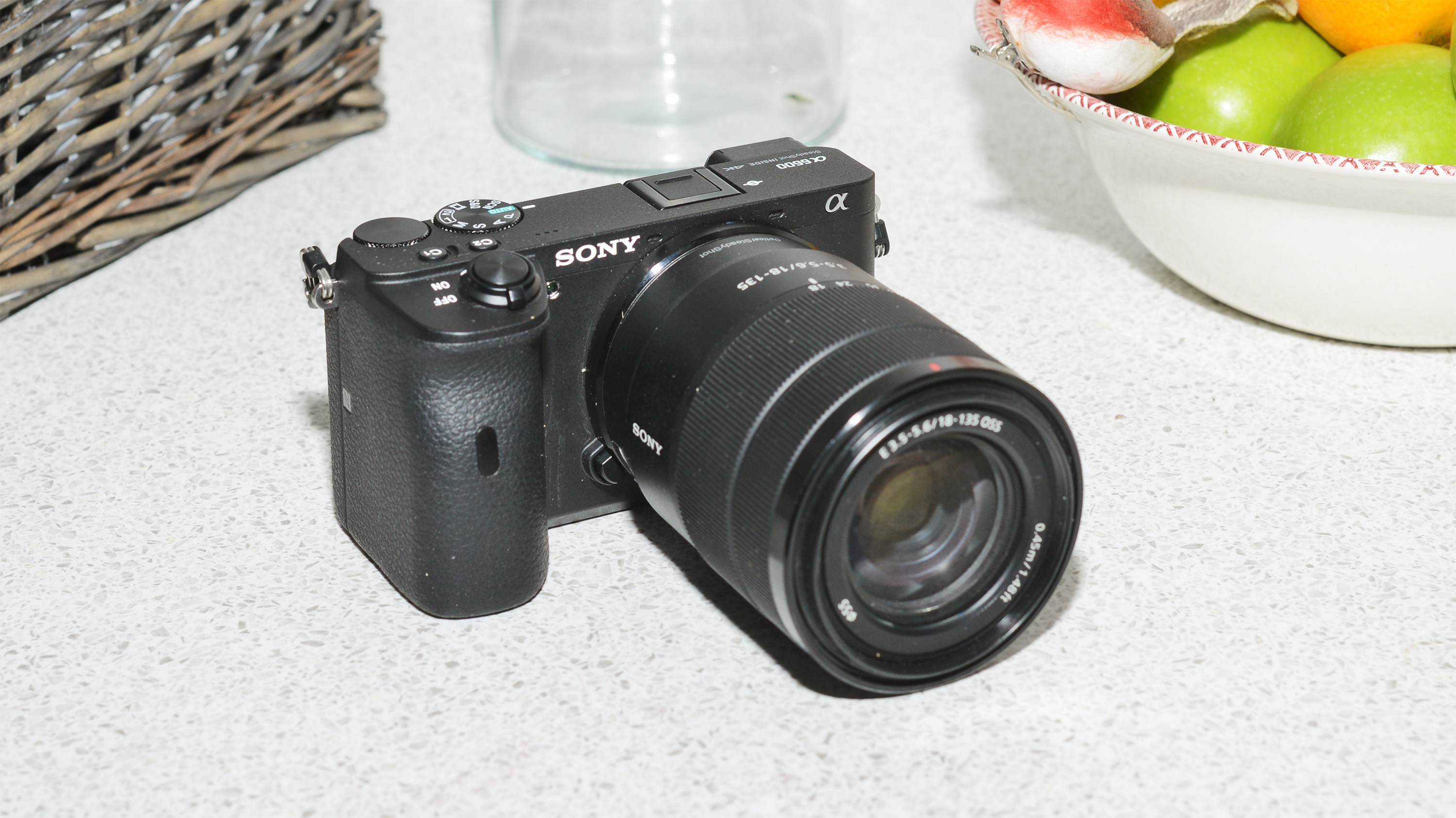Digital Camera World Verdict
The Sony a6600 looks an excellent camera for video and vlogging, and its stunning AF, in-body image stabilization and large battery make it suitable for demanding stills photography. However, its still image quality is good rather than class-leading, which is a significant shortcoming given the a6600 is up against some terrific and more keenly-priced rival cameras, and while its video performance is broadly good, its marred by pronounced rolling shutter effect and pretty ordinary video specifications by today's standards.
Pros
- +
5-axis image stabilisation
- +
Real-Time Eye AF tracking
- +
Long-lasting battery
- +
Unlimited 4K video recording
- +
Mic and headphones jacks
Cons
- -
Dated body design
- -
Cramped controls
- -
High price compared to rivals
- -
Pronounced rolling shutter
Why you can trust Digital Camera World
The Sony A6600 is Sony's latest and greatest offering in its popular A6000-series APS-C mirrorless cameras. Its 24.2MP sensor and BIONZ X image processor are nothing particularly special, but Sony has gone to town with the A6600's advanced autofocus and subject tracking capabilities.
Other new, high-end features include a weather-sealed magnesium alloy body that conceals in-body sensor-shift image stabilization and a high-capacity battery.
This is also a camera targeted squarely at video and vlogging. It boasts 4K HDR capture with no restriction on recording length, along with an integrated microphone socket for enhanced audio clarity, plus a built-in headphone input for sound monitoring.
Let's see if all this can justify the A6600's pretty steep asking price.
Specifications
Sony model number: ILCE-6600 (body only), ILCE-6600L (with 18-135mm)
Sensor: 24.2MP APS-C CMOS
Image processor: BIONZ X
AF points: 425 phase/contrast-detection
ISO range: ISO 100-32,000 (51,000)
Max image size: 6000x4000 pixels
Metering modes: Multi-segment, Center-weighted, Spot (standard/large), Average, Highlight
Video: 4K 30/25/24p, 1080 120/60/30/25/24p
Viewfinder: EVF, 2,359k dots, 0.39 type
Memory card: 1x Memory Stick/SD/SDHC/SDXC (UHS-I)
LCD: 3.0-inch, 922k dots, tilting touchscreen
Max burst: 11fps, 46 raw, 116 JPEG
Connectivity: Wi-Fi, Bluetooth, NFC
Size: 120.0 x 66.9 x 69.3mm
Weight: 503g
Key features
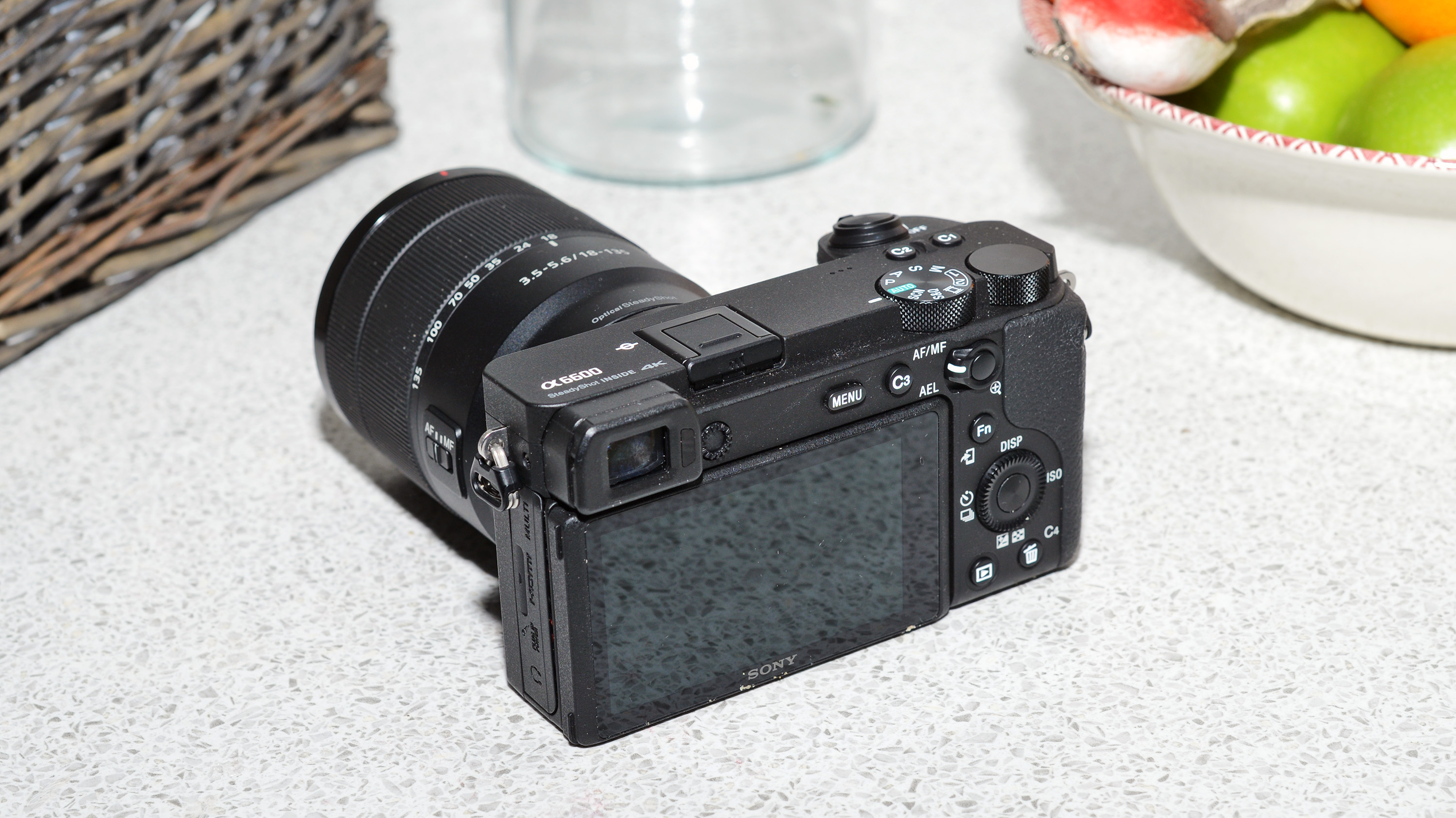
At the heart of the A6600 is Sony's venerable 24.2MP APS-C sensor. We've seen it before in previous a6000-series cameras, and indeed, even the entry-level A6100 shares the same sensor and Sony’s Bionz X processor. However this is no bad thing, as both come together to produce excellent image quality. Sensor sensitivity tops out ISO 32000 for stills (expandable to ISO 102,400), but it's the sensor's 5-axis image stabilization in-camera which is particularly impressive, especially in a camera this small. The system gives you up to 5 stops of stabilization and can work with lenses that don't contain their own optical stabilization.
Other cutting-edge tech includes 0.02-second autofocus with Real-Time Tracking Autofocus and Real-time Eye AF for recognizing eyes in humans and animals to automatically keeping them in focus. 11 frames per second (fps) burst shooting is also impressive for an APS-C mirrorless camera, as are the A6600 video features.
As well as that Real-time Eye AF working for video – something step-down models in the range don't feature – the A6600 boasts 4K movie recording in Super 35mm format, unlimited length video recordings, and XAVC S-format 4K video at 24fps and 30fps. There's 120fps slo-mo capture if you drop to Full HD res, and the A6600 has the ablity to record in a HLG (Hybrid Log-Gamma) picture profile, with S-Log3 and S-Log2 Gamma profiles available for color-grading in post-production.
More video-friendly features include a 3.5mm output so you can accurately monitor audio using headphones, and there's an integrated microphone input so you can attach a high quality external mic.
Build & handling
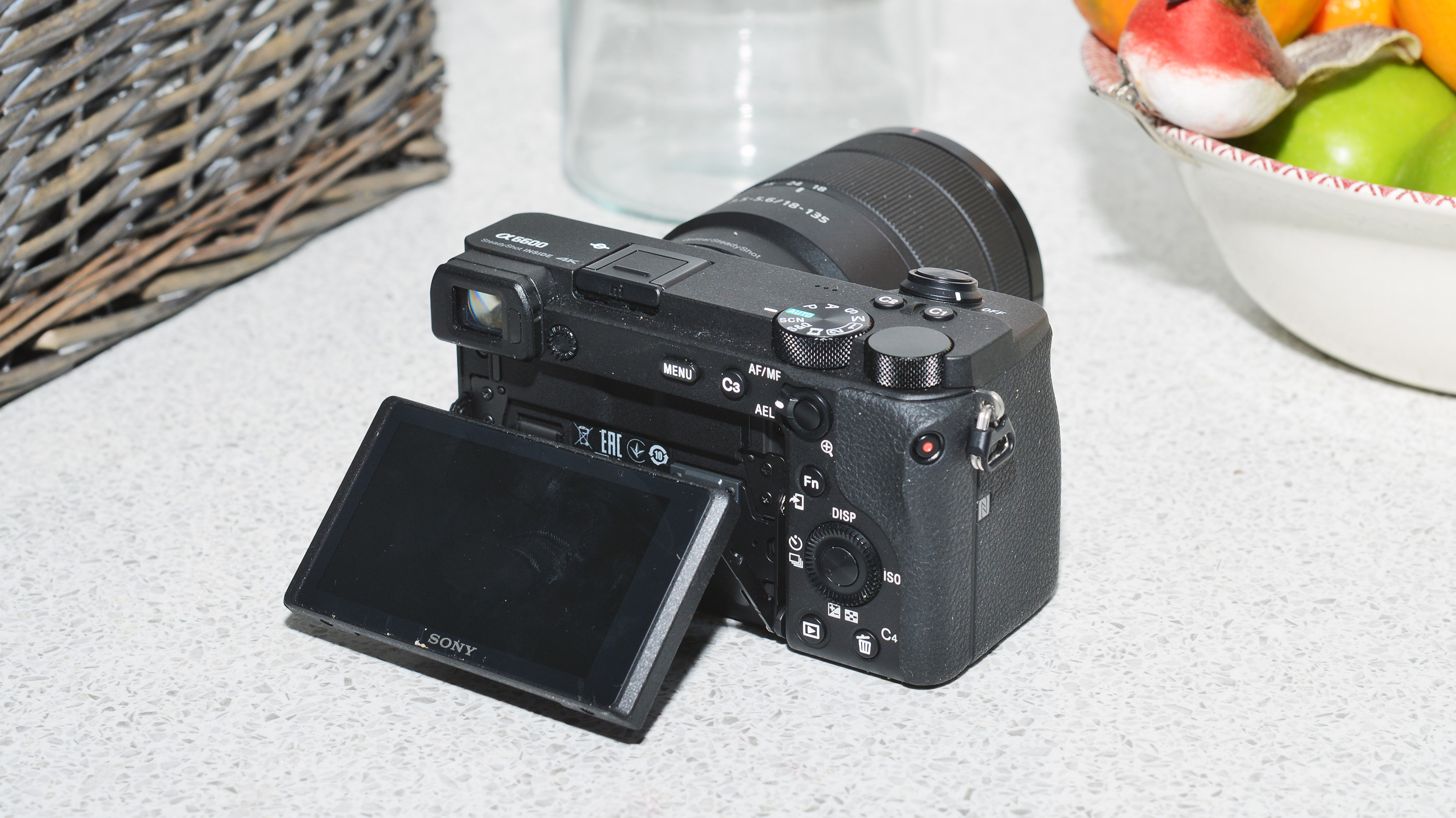
The a6600 is designed to withstand a little more than other Sony APS-C cameras. Boasting a weatherproof design, it’s fitted with Sony’s step-up NP-FZ1000 battery, which effectively doubles battery life to about 720 shots. This, Sony claims, makes it the longest-lasting APS-C mirrorless camera around.
To take this extra bulk, it boasts a larger grip than its siblings. This helps makes the camera feel comfortable and secure in larger hands, and there's still just about enough room between the grip and a typical lens to not feel cramped. The same can't really be said of the rear panel, however, which follows the a design ethos that can be traced back to Sony's NEX range of APS-C mirrorless cameras. It may keep the camera compact, but the rear panel controls end up being fairly cramped and the rear control wheel too small to use comfortably. The layout could really benefit from being assisted by a front-mounted control wheel like on the Fujifilm X-T3 or Nikon Z 50, but alas, the A6600 doesn't get one.
The most visible difference compared to other A6000-series cameras is the A6600’s chassis. It’s fashioned from magnesium alloy and looks distinctly high-end, though at 503g, the a6600 is a little heavier than models further down the a6x00 range.
The A6600 has a three-inch touchscreen LCD that tilts up to 180° degrees to face forward. It's a useful feature for vloggers (Sony a6000-series cameras have long been popular for vlogging thanks to their compactness and well-regarded video quality), as are the microphone and headphone ports. There's no pop-up flash, but a hot shoe is present for you to add your own flashgun.
The A6600 is designed to take Sony’s E-mount lenses, and a perfect – if pricey – pairing if you buy the camera body-only is to opt for the new E 16-55mm f/2.8 G standard zoom lens ($1,400/£1,200). Also consider Sony's E 70-350mm f/4.5-6.3 G OSS super-telephoto zoom lens ($1,000/£830) if you need more reach.
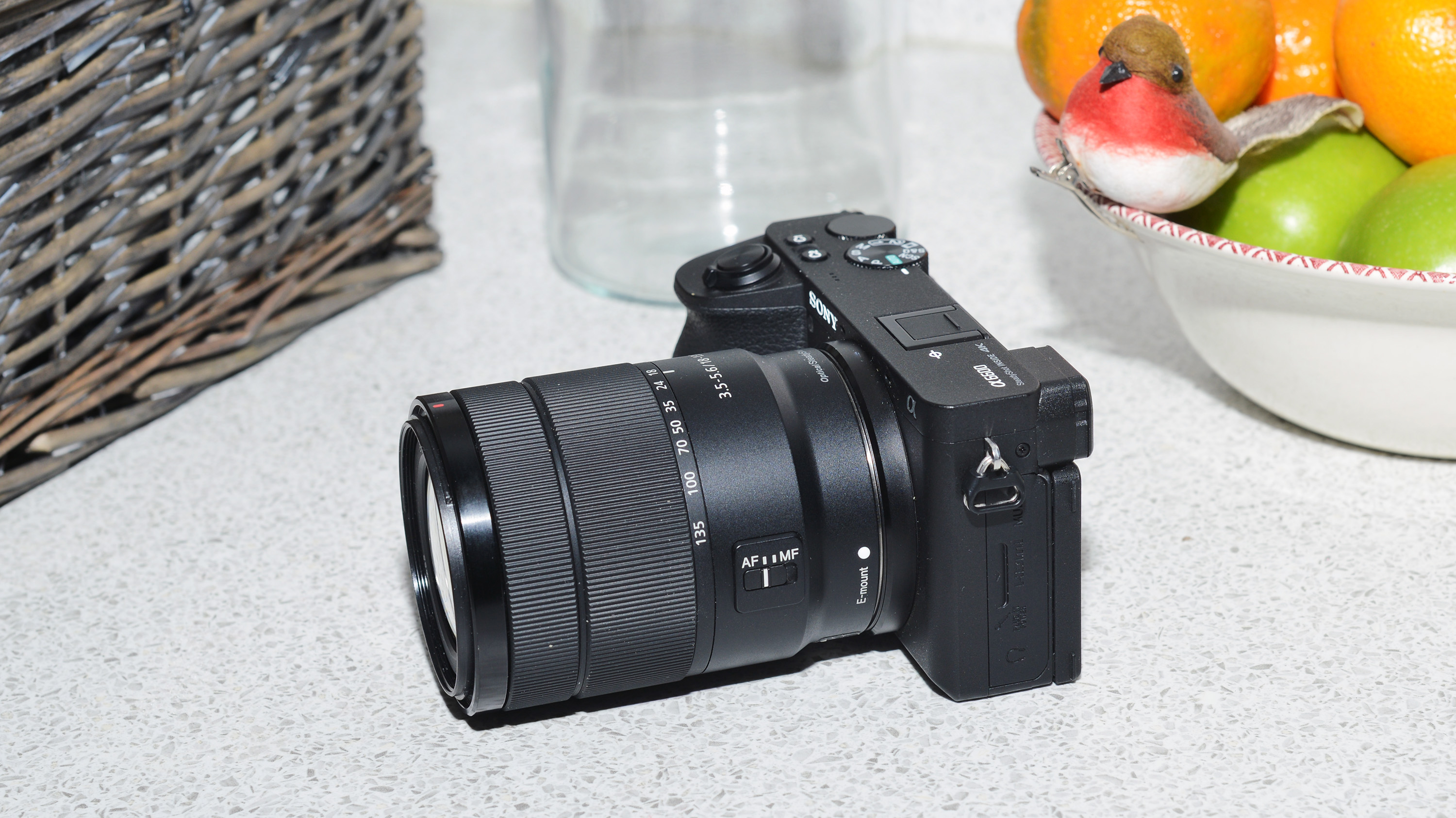
Performance
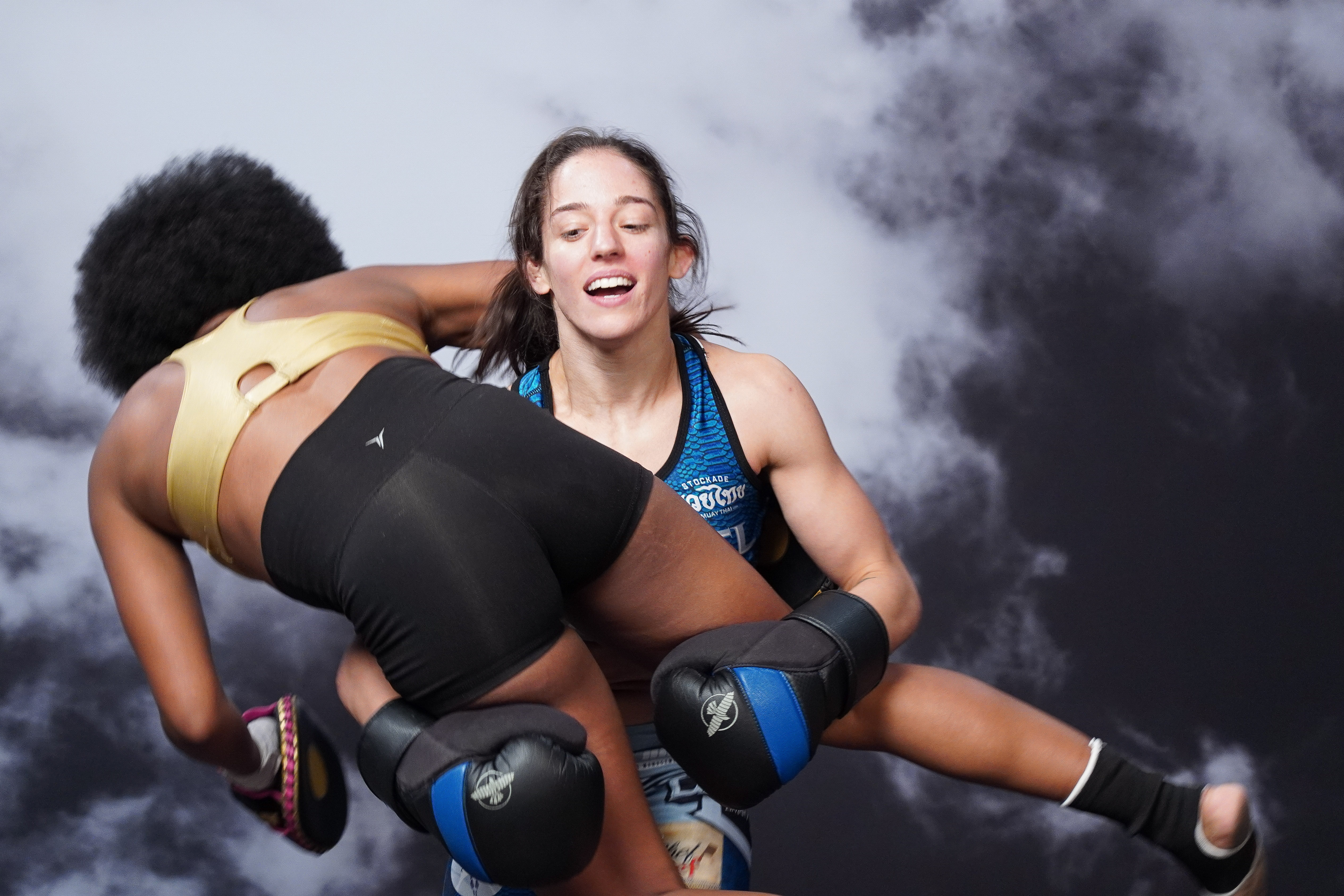
During our time with the A6600 it was the Real-time Tracking autofocus technology that impressed most of all. The system is able to track a subject and focus on them even when they turn their backs and it’s also possible to swap seamlessly between face detection, eye tracking and object tracking. The 11fps burst shooting is handy for getting a sharp shot, and if that's not fast enough to capture the action, you can use Real-Time Eye AF during video capture as well.
But the advanced AF systems certainly aren't compensating for any shortcomings when it comes to the basics. Evaluative metering is excellent, as the A6600 reliably nails the optimal exposure settings, even in tricky high-contrast and back-lit scenarios. Combine this with Sony's Dynamic Range Enhancement (HDR) and stills display a decent amount of shadow and highlight information.
If you're expecting the level of eye-popping sharpness and vibrancy you often get from images shot on many flagship camera phones, the A6600's images can seem slightly subdued by comparison. However we appreciate Sony's more subtle, realistic approach and avoidance of excessive in-camera image processing.
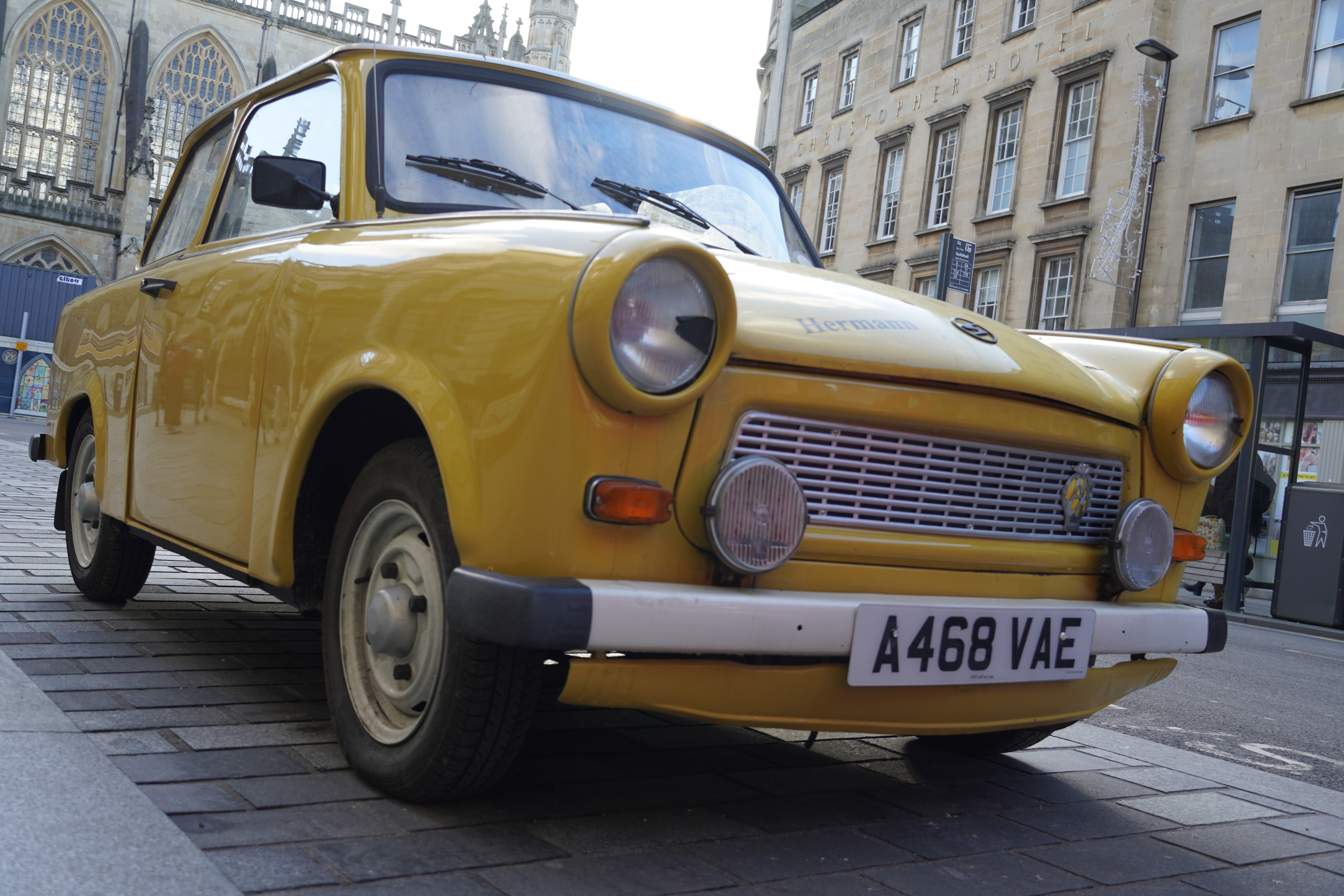

With the camera's DRO (Dynamic Range Optimization) set to Normal, the A6600 deals well with high-contrast scenes. But even with DRO cranked up to High, don't expect the same degree of shadow boosting you'll get with the latest and greatest camera phones. However, these can often go a little too far and look fake, whereas the A6600's dynamic range enhancement still retains the scene's original atmosphere.


With high ISO noise reduction set to Low, even this ISO 6400 shot remains clean and largely grain-free unless you scrutinize at 100% image size. What noise is visible is not distracting, and the a6600 still retains a good amount of fine detail, so high ISO shots never look over-processed or painterly. The camera has also faithfully captured the dull lighting in this scene, rather than artificially boosting the exposure.
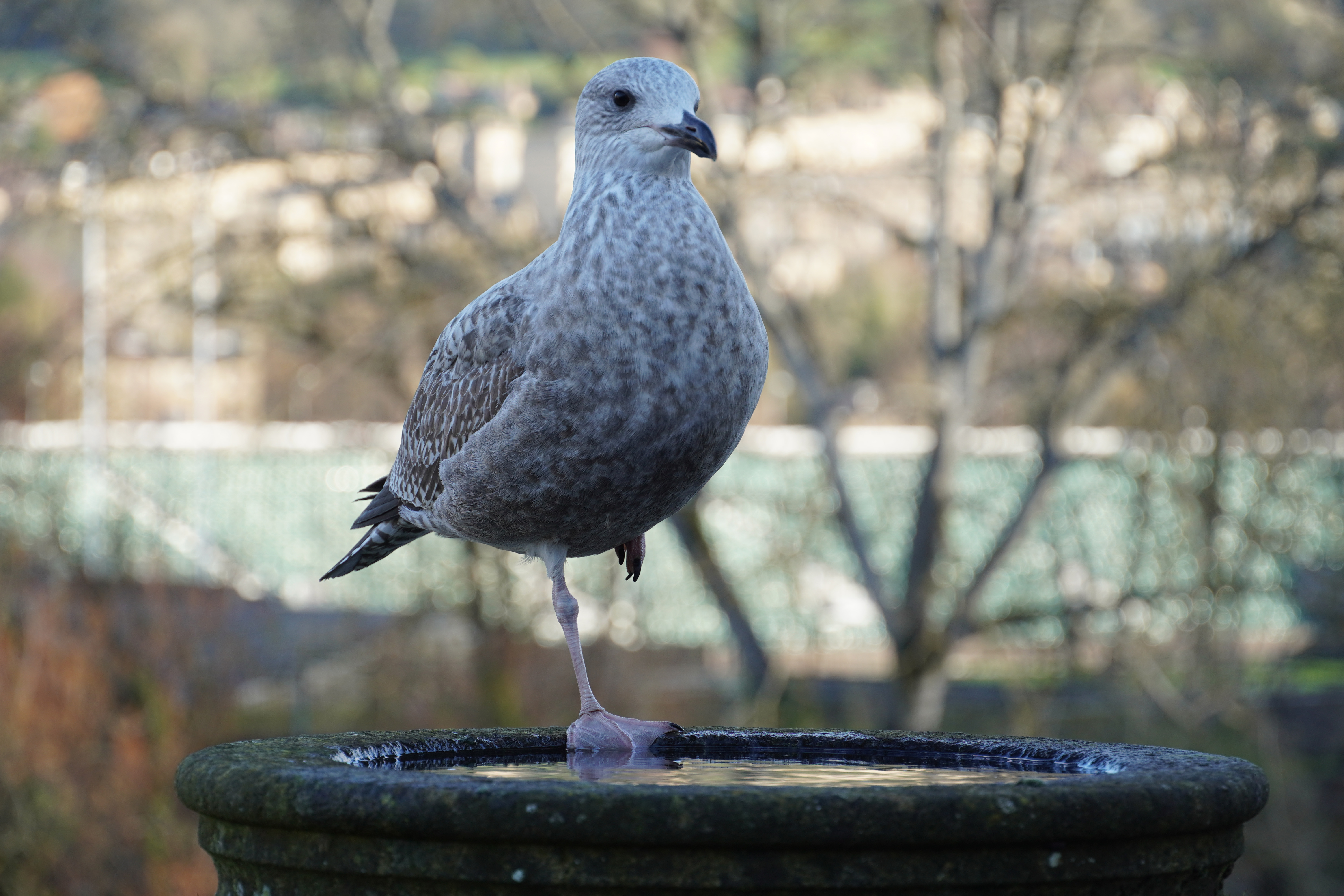
Sony's Real-Time Eye Autofocus is uncannily accurate at detecting eyes, and not just those set in a human's face. The system makes it effortlessly easy to track moving subjects like animals, birds, and children.
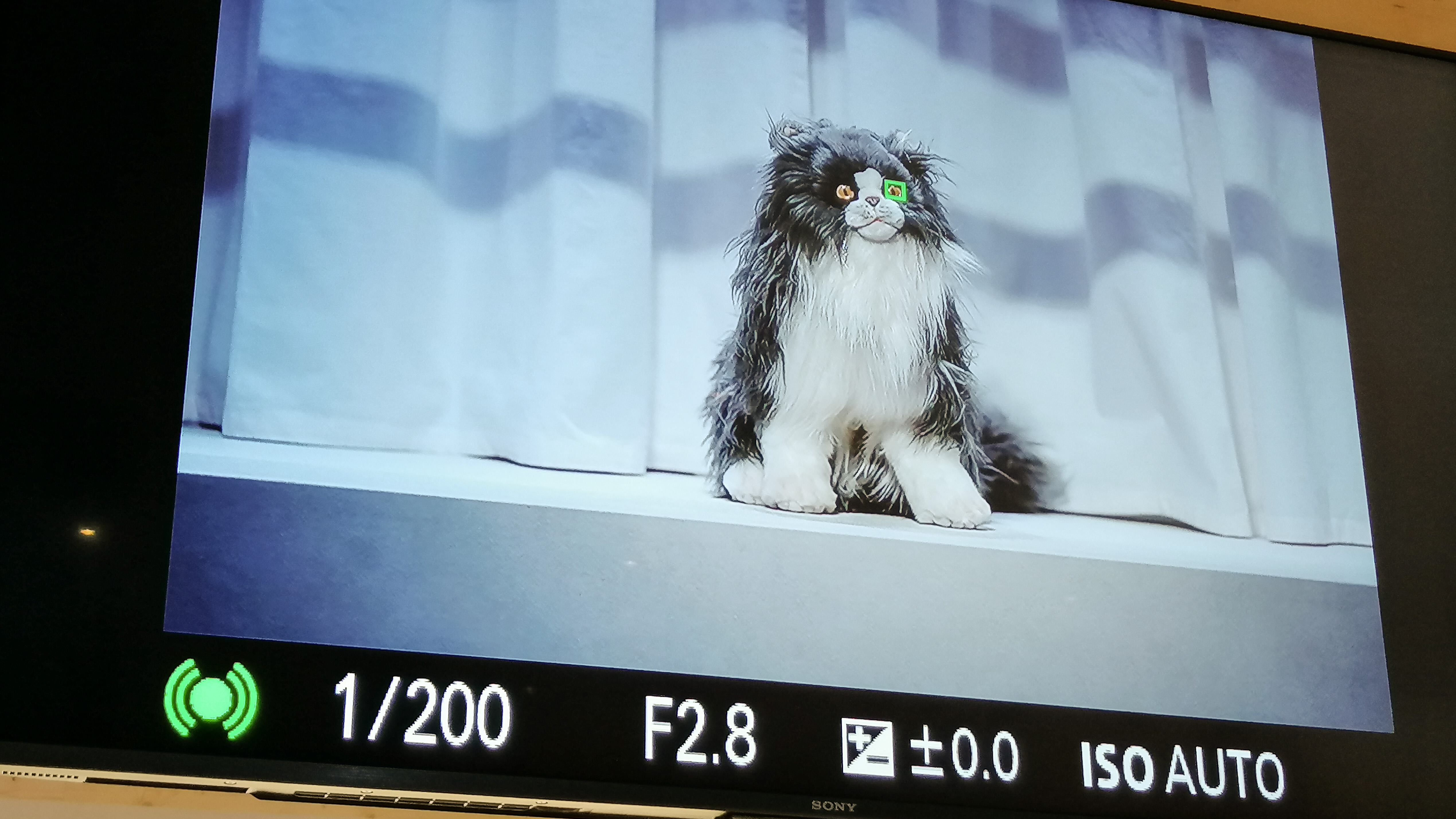
Video
To check out the Sony A6600's video – a key selling point of the A6000 series – we enlisted the help of Digital Camera Magazine's video expert Alistair Campbell. He made a series of telling observations.
First, the battery life is terrific for video shooters, but you can only charge the battery in-camera or pay extra for an external charger, which is not good. The magnesium alloy body feels strong and robust and the controls are positive and confidence inspiring – but why is there no front dial?
The body is quite small so there's limited room for external controls, and the top control dial is close to the function dial and it's too easy to accidentally switch out of video mode altogether when you're simply trying to change the aperture.
The record button is oddly placed too. Why is it on a slanted side edge and hard to reach? The provision of an audio jack is a real bonus, though, and something you don't get on many rival cameras.
The face/eye detection is insanely good. It works 99% of the time, even when we tried to fool it by getting our subject to spin and walk past pillars/cars etc to break the contact with camera – it still kept with her pretty much every time.
The color is excellent. The sample video was shot using the S-Log2 setting and the color is spot on.
The 180-degree screen is perfect for vloggers who need to film themselves – but if you attach any sort or mic at all, whether it’s a little onboard Rode or a receiver for a wireless lapel mic, you can't use the 180-degree screen! There will no doubt be accessories to get around this, but wouldn't it be better if the design had been modernised to allow the use of a hotshoe mic and the flipscreen at the same time?
And then there's the rolling shutter. It really is bad. If you haven't noticed this in video before, it's that left-right sideways slanting effect in vertical objects like walls and railings when the camera is moved from side to side. It's caused by the fact the sensor is 'read' in strips, not all at once, and it tends to be worse with larger sensors and older designs.
The A6600's rolling shutter effect not so noticeable when you're shooting, but in the edit phase it can feel like you're editing at sea. We don't normally test for rolling shutter in video cameras and wouldn't even comment on it unless it was prominent – but here, it really is. Everything in the background of our sample video (and at times the subject) just looks and feels like jelly when we watch it back. Whatever the Sony A6600's qualities as a video tool, just don't wave it around too much while you're filming!
Lab tests
We tested the A6600 alongside three of its main rivals: the Fujifilm X-T3, the Nikon Z 50, and the Panasonic Lumix GH5. While the A6600's image quality is very good in isolation, our lab tests show that Sony still has a little way to go if it's to equal the image quality offered by the A6600's main competition.
Resolution

Megapixel count is the primary factor in determining which camera comes out on top in our resolution test, so it's no surprise that the 26.1MP X-T3 leads the pack. The 24.2MP A6600 is second, ahead of the 20.9MP Nikon Z 50 and 20.3MP Lumix GH5.
Dynamic range
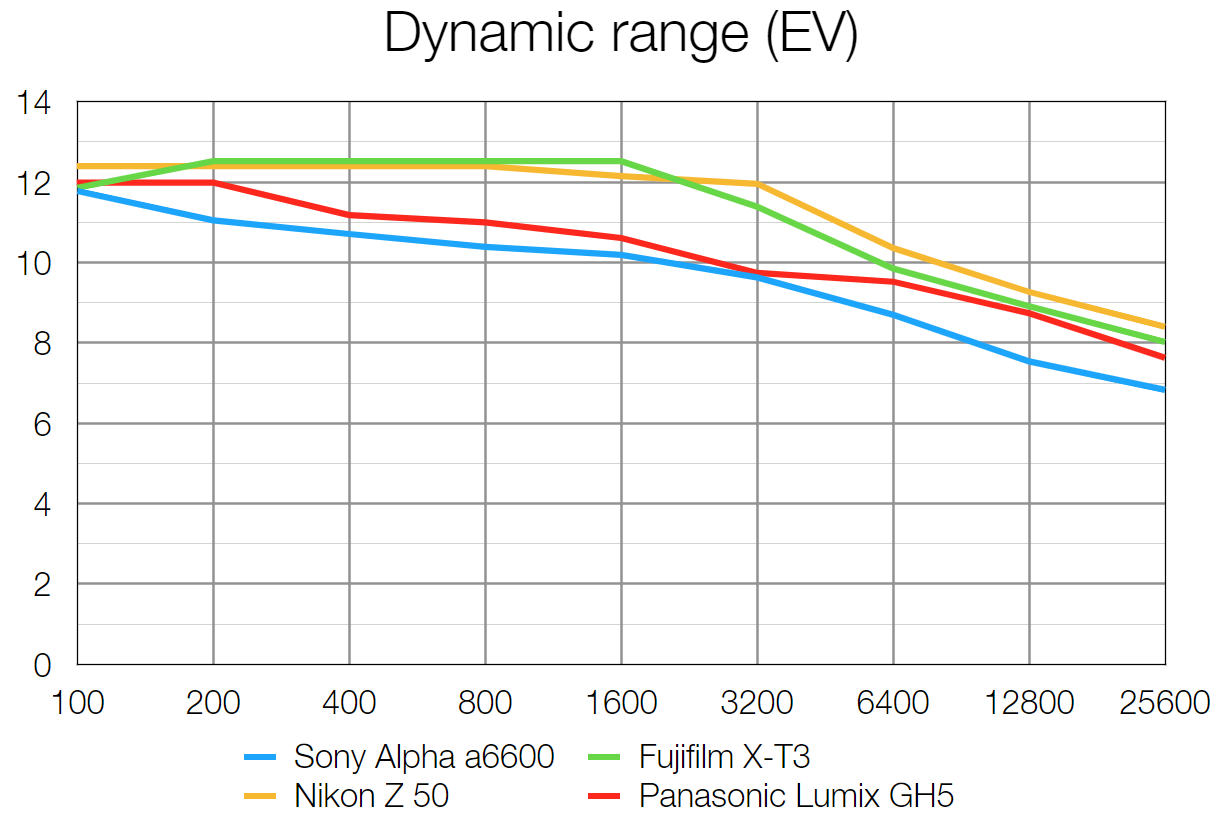
There may be a lot that's new in the a6600, but sadly its sensor isn't, and it shows when compared with the Nikon Z 50 and the stellar X-Trans 4 sensor in the Fujifilm X-T3. Even the aging Panasonic GH5 can capture slightly more dynamic range than the a6600.
It's worth noting that any in-camera dynamic range enhancement, like Sony's DRO, is disabled for our lab testing in order to get a level playing field.
Signal to noise ratio
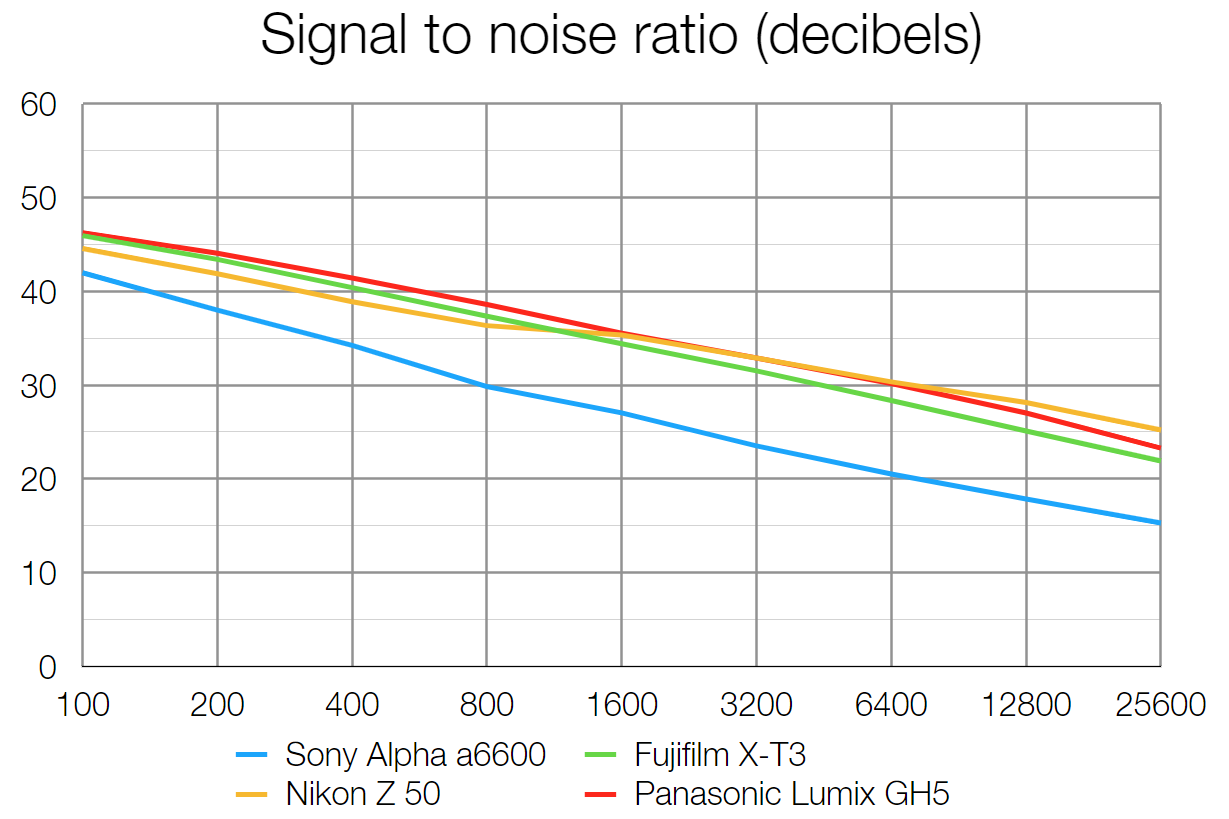
Our signal to noise test measures image clarity, specifically the ratio of the actual image 'data' you want to capture, versus the image noise that you don't want, but will inevitably be visible when shooting at higher ISO sensitivities. The higher the score at a given ISO sensitivity, the better.
Here the A6600 performs rather poorly, though the difference when it comes to real-world image quality isn't as pronounced as this graph implies.
Verdict

The Sony a6600 is certainly a very good camera, but it's also somewhat of a mixed bag.
On the one hand, its tricked-out autofocus and subject tracking excels, not just for an APS-C mirrorless camera, but even when compared to much pricier full-frame models. We also appreciate the high-capacity battery, which though a seemingly mundane feature, addresses the battery life shortcomings that plague the vast majority of mirrorless cameras. The plus points continue with the addition of sensor-shift in-body image stabilization, along with the high quality weather sealed magnesium alloy body – both features befitting a high end, enthusiast's camera. Sony's commitment to advanced video features also makes the A6600 stand out as capable vlogging camera.
However, even with this long list of hits, the A6600 still has some notable misses. It may be conveniently compact, but at this level enthusiasts are likely to appreciate a slightly larger camera in exchange for more comfortably positioned physical controls, and a larger amount of them. The A6600's touchscreen operation compensates to a degree, but it's no substitute for the ergonomics of direct-access buttons.
What's more, while the A6600 delivers respectable still image quality in isolation, it's not quite enough to outdo the performance offered by the terrific Nikon Z 50 and Fujifilm X-T3. Given both currently cost less than the a6600, you'll really need to prioritize the a6600's battery life, IBIS, or video-centric features to choose it over its key rivals until Sony reduces the price more to be more in line with the competition.
Read more:
• Sony A6000 vs A6100 vs A6300 vs A6400 vs A6500 vs A6600: how do you choose?
•These are the best mirrorless cameras you can buy right now
• How to choose the best Sony camera
• We pick the best cameras for vlogging
Ben is the Imaging Labs manager, responsible for all the testing on Digital Camera World and across the entire photography portfolio at Future. Whether he's in the lab testing the sharpness of new lenses, the resolution of the latest image sensors, the zoom range of monster bridge cameras or even the latest camera phones, Ben is our go-to guy for technical insight. He's also the team's man-at-arms when it comes to camera bags, filters, memory cards, and all manner of camera accessories – his lab is a bit like the Batcave of photography! With years of experience trialling and testing kit, he's a human encyclopedia of benchmarks when it comes to recommending the best buys.
